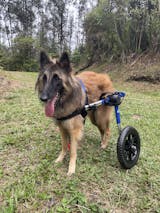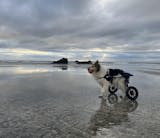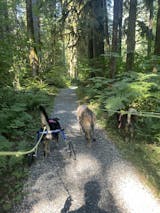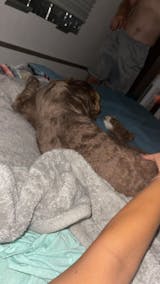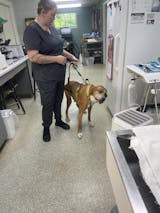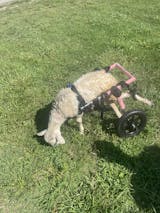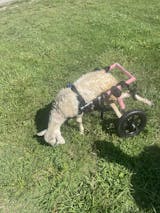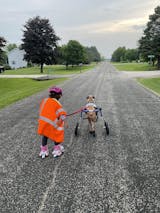Walkin' Wheels Med/Large Dog Wheelchair
$499.00
FAST FREE SHIPPING ON ANY ORDER $149 OR MORE
Our SureFit® Guarantee
Just use our easy to follow guide to take your pet’s measurements and enter them into our calculator.
Product details
Sizing
Measure the Rear Leg Height, from the top of the leg where it attaches to the abdomen down to the toe pad, while your pet is lying down, as shown in the photo. Do not pull the leg tight; leave some natural bend.
| Rear Leg Height | Wheel & Strut |
|---|---|
| 14-16" | 9" struts and 12" wheels |
| 17-20" | 12" struts and 12" wheels |
| 21-22" | 12" struts and 16" wheels |
Usage







WITH WALKIN' WHEELS, YOU'RE TAKING THE RIGHT STEP
Different dogs have unique body shapes, so we designed the Walkin' Wheels wheelchair to fit various measurements. Your dog can use it to go to the bathroom without needing to remove it. Dogs love the outdoors and exploring, so we created a chew-proof and rust-resistant aluminum frame for durability. The wheels are all-terrain and won't puncture.
The Walkin' Wheels wheelchair is designed for easy use by both pets and owners. Setting it up is similar to using a regular harness, with the main difference being attaching the harness to the wheelchair frame, which takes just seconds.This wheelchair is also easy to transport and store. Its durable design is compact, allowing it to fit in a car or any space in your home without taking up much room.














